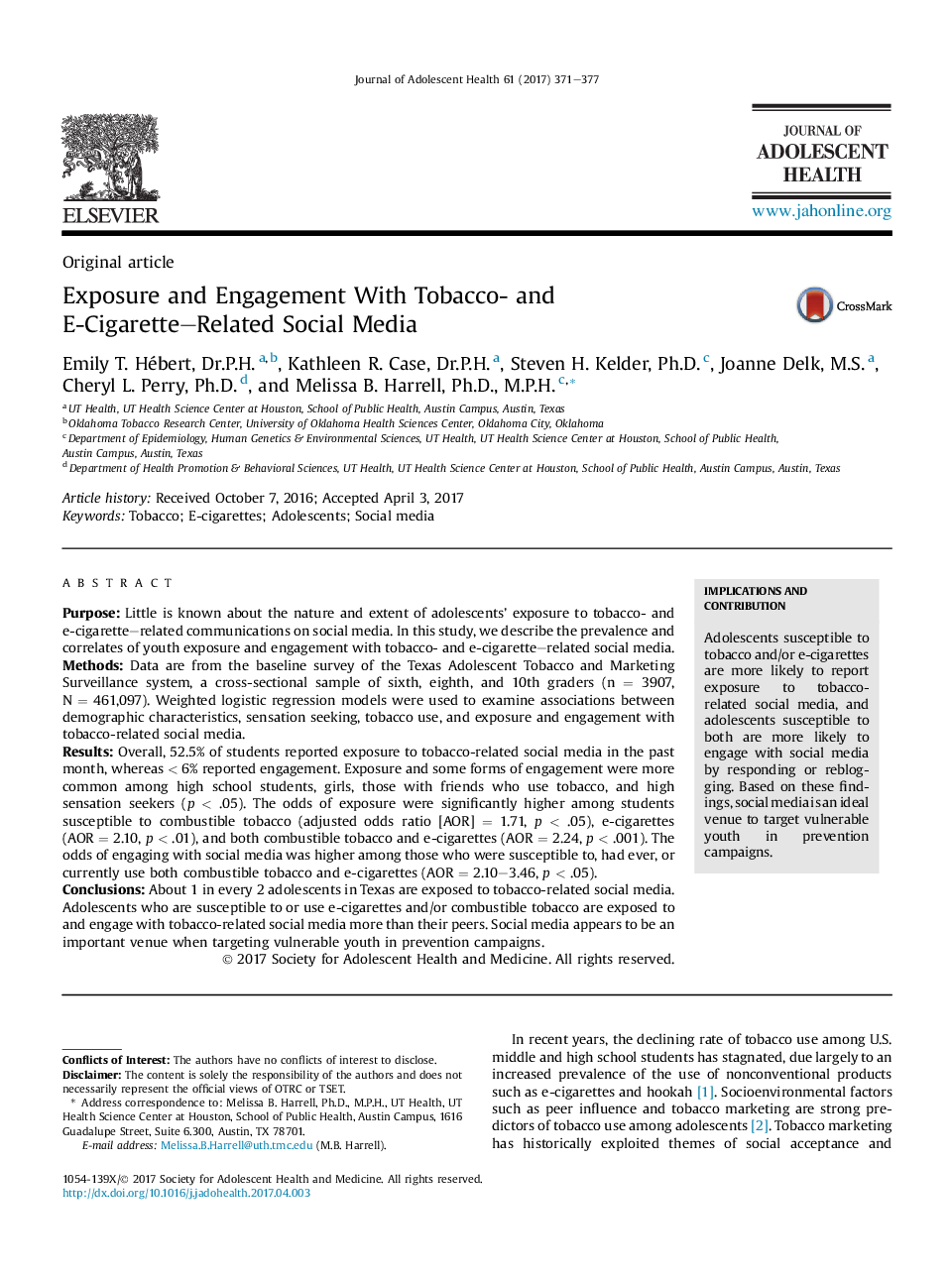| Article ID | Journal | Published Year | Pages | File Type |
|---|---|---|---|---|
| 5121252 | Journal of Adolescent Health | 2017 | 7 Pages |
PurposeLittle is known about the nature and extent of adolescents' exposure to tobacco- and e-cigarette-related communications on social media. In this study, we describe the prevalence and correlates of youth exposure and engagement with tobacco- and e-cigarette-related social media.MethodsData are from the baseline survey of the Texas Adolescent Tobacco and Marketing Surveillance system, a cross-sectional sample of sixth, eighth, and 10th graders (n = 3907, N = 461,097). Weighted logistic regression models were used to examine associations between demographic characteristics, sensation seeking, tobacco use, and exposure and engagement with tobacco-related social media.ResultsOverall, 52.5% of students reported exposure to tobacco-related social media in the past month, whereas < 6% reported engagement. Exposure and some forms of engagement were more common among high school students, girls, those with friends who use tobacco, and high sensation seekers (p < .05). The odds of exposure were significantly higher among students susceptible to combustible tobacco (adjusted odds ratio [AOR] = 1.71, p < .05), e-cigarettes (AOR = 2.10, p < .01), and both combustible tobacco and e-cigarettes (AOR = 2.24, p < .001). The odds of engaging with social media was higher among those who were susceptible to, had ever, or currently use both combustible tobacco and e-cigarettes (AOR = 2.10-3.46, p < .05).ConclusionsAbout 1 in every 2 adolescents in Texas are exposed to tobacco-related social media. Adolescents who are susceptible to or use e-cigarettes and/or combustible tobacco are exposed to and engage with tobacco-related social media more than their peers. Social media appears to be an important venue when targeting vulnerable youth in prevention campaigns.
